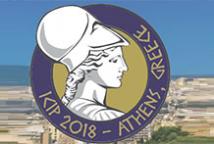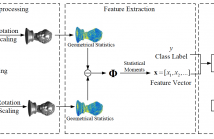
The International Conference on Image Processing (ICIP), sponsored by the IEEE Signal Processing Society, is the premier forum for the presentation of technological advances and research results in the fields of theoretical, experimental, and applied image and video processing. ICIP has been held annually since 1994, brings together leading engineers and scientists in image and video processing from around the world. Visit website.

This paper proposes a statistical method to enhance image quality in order to increase the click-through rate (CTR) of product images. We build a joint probability model of global image features for photos of different product categories. The images are modified in terms of brightness, contrast, and sharpness in order to increase the expected CTR. The effectiveness of the method is evaluated using a perceptual user study, comparing it to histogram equalization methods, and by conducting an A/B test over one week on the e-commerce site Rakuten Ichiba.
- Categories:
 126 Views
126 Views
- Read more about Matching Pursuit Based on Kernel Non-second Order Minimization
- Log in to post comments
The orthogonal matching pursuit (OMP) is an important sparse approximation algorithm to recover sparse signals from compressed measurements. However, most MP algorithms are based on the mean square error(MSE) to minimize the recovery error, which is suboptimal when there are outliers.
- Categories:
 11 Views
11 Views
- Read more about NEAR INFRARED IMAGERY COLORIZATION
- 1 comment
- Log in to post comments
This paper proposes a stacked conditional Generative Adversarial Network-based method for Near InfraRed (NIR) imagery colorization. We propose a variant architecture of Generative Adversarial Network (GAN) that uses multiple loss functions over a conditional probabilistic generative model. We show that this new architecture/loss-function yields better generalization and representation of the generated colored IR images. The proposed approach is evaluated on a large test dataset and compared to recent state of the art methods using standard metrics.
- Categories:
 26 Views
26 Views
Coded exposure photography (CEP), originally proposed by Raskar et al., has been known as one of the promising techniques for motion deblurring. In this area, much efforts have been made for designing a fluttered shutter sequence to shape the spectrum of a uniformly motion-blurred image into an invertible one. Since the duty cycle of the fluttered shutters proposed thus far is generally low, the number of photons entering into an image sensor is reduced, which leads to a large Poisson noise in a low lighting condition.
- Categories:
 29 Views
29 Views
- Read more about Learning Sensitive Images using Generative Models
- Log in to post comments
The sheer amount of personal data being transmitted to cloud services and the ubiquity of cellphones cameras and various sensors have provoked a privacy concern among many people. On the other hand, the recent phenomenal growth of deep learning that brings advancements in almost every aspect of human life is heavily dependent on the access to data, including sensitive images, medical records, etc. Therefore, there is a need for a mechanism that transforms sensitive data in such a way as to preserves the privacy of individuals, yet still be useful for deep learning algorithms.
- Categories:
 17 Views
17 Views
3D steganalysis aims to find the changes embedded through steganographic or information hiding algorithms into 3D models. This research study proposes to use new 3D features, such as the edge vectors, represented in both Cartesian and Laplacian coordinate systems, together with other steganalytic features, for improving the results of 3D steganalysers. In this way the local feature vector used by the steganalyzer is extended to 124 dimensions.
- Categories:
 15 Views
15 Views
- Read more about LOW COMPLEXITY CONVOLUTIONAL NEURAL NETWORK FOR VESSEL SEGMENTATION IN PORTABLE RETINAL DIAGNOSTIC DEVICES
- Log in to post comments
Retinal vessel information is helpful in retinal disease screening and diagnosis. Retinal vessel segmentation provides useful information about vessels and can be used by physicians during intraocular surgery and retinal diagnostic operations. Convolutional neural networks (CNNs) are powerful tools for classification and segmentation of medical images. However, complexity of CNNs makes it difficult to implement them in portable devices such as binocular indirect ophthalmoscopes. In this paper a simplification approach is proposed for CNNs based on combination of quantization and pruning.
Poster-Retina.pdf
- Categories:
 38 Views
38 Views
- Read more about ADAPTIVE SPECULAR REFLECTION DETECTION AND INPAINTING IN COLONOSCOPY VIDEO FRAMES
- Log in to post comments
Colonoscopy video frames might be contaminated by bright spots with unsaturated values known as specular reflection. Detection and removal of such reflections could enhance the quality of colonoscopy images and facilitate diagnosis procedure. In this paper, we propose a novel two-phase method for this purpose, consisting of detection and removal phases. In the detection phase, we employ both HSV and RGB color space information for segmentation of specular reflections.
- Categories:
 30 Views
30 Views
- Read more about LIVER SEGMENTATION IN CT IMAGES USING THREE DIMENSIONAL TO TWO DIMENSIONAL FULLY CONVOLUTIONAL NETWORK
- Log in to post comments
The need for CT scan analysis is growing for diagnosis and therapy of abdominal organs. Automatic organ segmentation of abdominal CT scan can help radiologists analyze the scans faster, and diagnose disease and injury more accurately. However, existing methods are not efficient enough to perform the segmentation process for victims of accidents and emergency situations. In this paper, we propose an efficient liver segmentation with our 3D to 2D fully convolution network (3D-2D-FCN). The segmented mask is enhanced using the conditional random field on the organ’s border.
- Categories:
 22 Views
22 Views